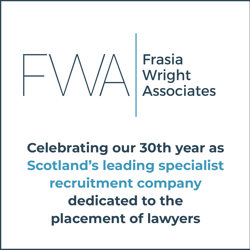The Law of Criminal Procedure in Scotland
The practice of criminal law is closely regulated by procedure, which in turn is intertwined with rules of evidence. Sometimes it can be difficult to disentangle them.
The Law of Criminal Procedure in Scotland : Professor Pamela Ferguson
(W Green/SULI ISBN: 9780414112841 £135 ebook and ProView £135)
Professor Ferguson points out SULI set a “high bar for accepting books for publication". Requirements include that a SULI text “refer to all Scottish authority on the issues being discussed” (the emphasis is in the original) and “make comprehensive reference to the major English and, where appropriate, foreign equivalents.” It must be “discursive, not only of the case law [and, presumably, statutes] but of the commentaries thereon and of the concepts behind the law”; it must take a historical and comparative approach; it must be “evaluative”, considering “the principles behind the law” and the extent to which current rules are consistent with these principles; and it must be “comprehensive, with each footnote listing every Scottish case that illustrates the point”. Professor Ferguson may acknowledge she has not referred to every authority. However, this is a seminal work, which should be read by everyone involved in either the practice or policy of criminal procedure.
The practice of criminal law is closely regulated by procedure, which in turn is intertwined with rules of evidence. At times, it is difficult to disentangle them. Between them they seek to strike a balance of rights of securing the public interest in the prosecution of crime and those accused of criminal conduct. Professor Ferguson considers these competing rights, what has been described as “a set of partly colliding social values and goals” in both academic terms in considering the purpose of the criminal process and considering what is defined within the broad term “public interest.” In considering the presumption of innocence, Professor Ferguson concludes it is “treated seriously” by the Scottish process placing, as it does, a broader application suggested by her “as a duty which the police, prosecution and courts must fulfil, serving to underline the value of respect and of the need to treat suspects and accused persons with dignity at all stages of the process.”
The debate on the not proven verdict and trial by jury continues. Professor Ferguson provides detailed and considered insight into both the historical background and development of the three verdicts, attempts by the courts to define not proven (now not to be undertaken) and the academic and common perception of when such a verdict might be made available. It is interesting to read the academic tracts on the not proven verdict where there is a suggestion it does retain a place for those affected by criminal conduct and the accused in each having an understanding of the decision of the jury, in absence of a reasoned decision. Professor Ferguson analyses the role of the jury, its composition and offers both positive and critical views. As with other aspects of criminal procedural, Professor Ferguson offers a view on reform to address the concerns she has identified. Apart from the practical aspects such as composition of the jury, making jury service easier, one of the more interesting suggestions is greater judicial involvement in the concept of route to verdict. It is suggested this may address twin perceived concerns that absence of a reasoned decision denies the accused and complainers a transparent understanding of the jury’s verdict. It is also suggested the case law where the court has denied the jury an opportunity to add a rider to its verdict has constrained the sentencer. This is very much an example of the whole of the text: it causes one to reflect on the practice and how it has become the case we do what we do.
The first part of the book is the core academic analysis of the subject area. It provides the bedrock from which the practice is examined.
The sections on the book which address practice are readable and readily accessible.
The four chapters which follow consider the framework of criminal procedure; the police and prosecution; pretrial issues and “ the trial and the protagonists.” The rights of complainers and, more generally, witnesses is carefully considered from the rape shield provisions to general special measures.
As with the consideration of the verdicts, each part of the process is described, with abundant and helpful reference to case law, a consideration of the practice and a conclusion with some recommendations for improvement or areas of review.
Professor Ferguson concludes “As this book has shown, the Scottish criminal process provides police and prosecutors with extensive powers, and a great deal of discretion in how to exercise these powers—but it also provides safeguards against abuse.” She further writes, “this book has demonstrated that there is a great deal to be proud of in the Scottish system of criminal procedure. It has many features which other jurisdictions would do well to consider.” Prime amongst these, the author offers corroboration, independence of the prosecutor and the spectrum of rights afforded the accused. In reaching these conclusions, the author has examined one of the most significant areas of the practice of criminal law and the role and contribution made by the defence, prosecution, judge and jury to that process.
There is a rich source of case law upon which Professor Ferguson draws and quotes. It is a large book. However, sign up for the ProView ebook and it is easy to access and search. This is an outstanding text.
Written by David J Dickson, Solicitor Advocate






